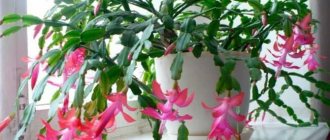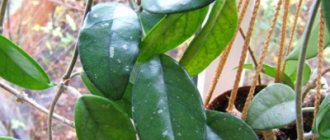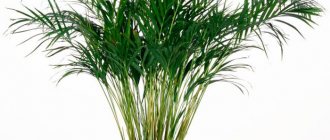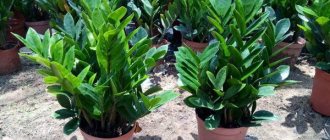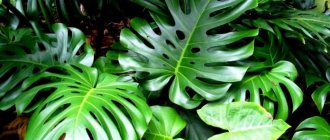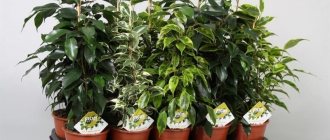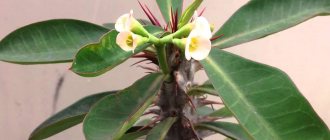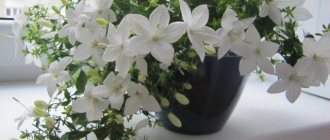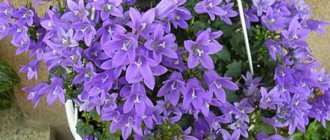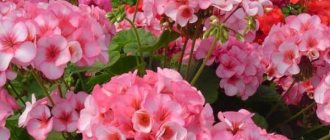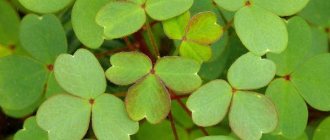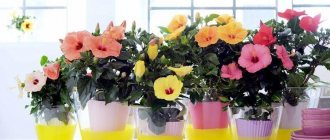Category: Traditional medicine, Succulents Published 10/22/2018 · Comments: · Reading time: 11 min · Views: 2,185
Potted flowers are often used to decorate home interiors, and the largest and most impressive of them complement the design of offices, sales areas, foyers and other non-residential premises. Green inhabitants are able to enliven the atmosphere, making it cozy or exotic, and it is difficult to believe that these “beauties” can be dangerous.
However, as it turned out, in floriculture there are many flowers that are poisonous, but at the same time, incredibly popular. These also include poisonous spurge - a common flower that has successfully adapted to life at home.
There are many varieties of this plant, differing in appearance, but they all contain enough milky juice with toxic substances that make them very dangerous for humans. But, no matter how strange it may sound, these natural poisons have not only harmful, but also beneficial properties.
General characteristics of the plant
Euphorbia is a perennial succulent or cactus plant of the Euphorbiaceae family. There are more than 1500 species. As a rule, it has a straight stem without branches, sometimes covered with spines. Leaves are alternate with entire blades. Inflorescences grow from old flowers. At the end of flowering, fruits with seeds appear.
Why is this flower dangerous? A distinctive feature of plants of the Euphorbiaceae family is the milky sap secreted by the leaves and stems at the cut site. Has no odor, slightly pungent taste. It contains toxic chemical elements, making it poisonous to humans.
The exact composition of the juice has not yet been studied, however, the indoor euphorbia flower often acts as the main component of folk medicines to get rid of many diseases. In vegetable gardens and orchards it is used to destroy harmful insects.
Preparation and storage
To properly collect flowers, you need to make sure that the plant being harvested is milkweed. After all, if you collect the wrong herb, it will not have the desired effect, and otherwise poisoning or other negative consequences may occur.
When harvesting the herb, spurge should not be allowed to include other medicinal plants. It is better to collect in areas where large quantities grow.
Folk recipes use the root, stems and juice. All these parts should be prepared separately. The juice is obtained from the fresh plant. Then it is evaporated in a water bath and placed in glass containers. Store blanks only in a cool place.
Euphorbia roots are harvested in early spring. This is done before the first leaves appear. You can also harvest them in late autumn, when the plant begins to wither. The dug up roots are cleaned of dirt, washed, treated with boiling water and dried at a temperature of 40 degrees.
The stems and grass of milkweed are collected before it blooms. After harvesting, the juice is squeezed out and the plant is laid out to dry.
Euphorbia flowers are harvested on rare occasions and then placed in places where the sun's rays do not reach. The finished raw materials are placed in glass jars for storage.
The dried plant can be stored for no more than 1 year. After this period, its medicinal properties are lost.
Beneficial features
Today, this indoor flower is used not only in folk, but also in official medicine. For the preparation of medicines, grass, milky juice and roots are used. The chemical composition contains flavonoids, saponins, tannins, ascorbic acid, various resins, and bitter extracts. This determines the stimulating, tonic, antibacterial properties of milkweed. If the dosage and caution are observed, it can have a therapeutic effect.
Application:
- Accelerating the process of skin regeneration;
- Warts, calluses, scabies;
- Fungal skin infections;
- As a laxative;
- For helminthic infestations;
- Blood purification;
- Reducing the growth rate of tumors and metastases;
- Mastopathy, uterine fibroids and infertility;
- Emetic;
- Diseases of the kidneys and urinary system;
Despite its many positive qualities, indoor spurge flower is dangerous for some categories of people. Use of medicinal infusions and decoctions made on its basis should not be used by women during the period of bearing and feeding a child, as well as by people who react acutely to the elements that make up the herb.
Why is spurge dangerous in the house? Can it harm children? Euphorbia, as a houseplant, can pose a danger to children and animals. The juice, if it gets on exposed skin, leads to burns, and if consumed internally, it can cause severe poisoning. Its use without certain treatment at home is undesirable.
Benefits and medicinal properties
Despite the fact that the chemical composition of milkweed has not yet been fully studied, the flower is often used in home medicine and more.
- Let's consider what useful qualities it has:
- The juice is used in homeopathy in the form of various remedies.
- The enzymes in milkweed help support immunity.
- The juice is used to treat insect and animal bites.
- The medicine is used to treat large tumors.
- Remove warts, lichen and scabies.
- In small doses, the juice produces a rejuvenating effect.
- An extract based on the root treats headaches.
- Decoctions are used for bathing children with skin problems.
- The juice strengthens the walls of blood vessels.
- Effective in the treatment of diseases in the field of intimate health.
Under what conditions can you be poisoned by milkweed?
Poisonous indoor spurge causes intoxication when inadvertently or intentionally ingested. A negative reaction of the skin is manifested by burns, sometimes quite extensive. This happens because the juice of the flower is released in the air very quickly and in large quantities.
Ways of negative impact:
- Replanting, pruning an indoor flower without following the rules of caution;
- Work in the garden without using protective equipment;
- Preparation and treatment with medicinal substances based on indoor milkweed according to untested folk recipes;
- Overdose of infusions and decoctions;
- Accidental ingestion of leaves and internal flower fluid.
In children, poisoning and burns are a common reaction of the body when picking and playing with wild species of milkweed. The rate of development of intoxication depends on the physical condition of the body, the presence of chronic diseases and the amount of toxic substance consumed in food.
Composition of milkweed juice
The milky white juice has a pungent taste, but is completely odorless. It is released from the cut of the plant and quickly hardens in the air.
The composition of milkweed juice includes: saponins, alkaloids, gum, tannins and other components.
Euphorbia is a natural aphrodisiac that increases the body's defenses. The juice of the plant has antiseptic and antibacterial properties.
Symptoms of milkweed poisoning
Symptoms of poisoning from an indoor flower do not appear immediately, but 8 to 10 hours after eating elements of the flower or its milky water. Toxic elements cause severe disturbances in the functioning of the digestive system in humans, leading to gastroenteritis.
Signs:
- Pain in the abdominal cavity, nausea, vomiting;
- Intestinal dysfunction – diarrhea, flatulence;
- Burning in the esophagus, pain;
- General weakness of the body;
- Heat;
- Hypotension;
- Decreased heart rate.
The main thing that makes milkweed dangerous is its effect on the nervous system. A person experiences involuntary muscle contractions and loss of balance. Consciousness is lost, visual and auditory hallucinations are possible. With severe intoxication, coma may develop. Quite dangerous for people prone to allergic reactions or suffering from diseases of the cardiovascular system. The poisonous indoor spurge flower is dangerous because in severe cases it can be fatal.
The juice of indoor milkweed is quite poisonous, which causes burns upon contact with skin. Damaged areas of the dermis swell and turn red, itching and burning appear, and blisters form. The mucous membranes react to the internal liquid of indoor milkweed with redness and swelling. The milky water of the flower is dangerous for the eyes. Causes severe lacrimation and swelling of the eyelids, and can lead to blindness.
Milkweed Recipes
We bring to your attention several folk recipes based on euphorba. We'll tell you how to prepare and use medicinal products correctly.
Euphorbia juice
Latex herbs are used to remove skin pigmentation, against papillomas, and corns.
To get rid of eczema, depriving, you need to lubricate the affected area with it, after 20 minutes, carefully rinse with warm water.
To remove freckles, apply the juice to a cotton swab, wipe your face, and wash your face after 10-15 minutes. The procedure is carried out as carefully as possible, avoiding contact of toxic liquid with the eyes.
Plantar warts, calluses, and corns can be removed in a short time. Every day before going to bed, you need to smear your feet with pure juice, and then put on thick socks. In the morning, wash your feet thoroughly and rub them with a pumice stone.
Latex is used in pharmaceuticals to make the drug Euphorbium. The drug causes vomiting and helps with constipation. It can be ordered online and picked up at your nearest pharmacy. The websites include instructions with descriptions, photos, and consumer reviews.
Decoctions of leaves and stems
Properly prepared decoctions are considered a good sedative:
- For 5 g of herb, take 500 ml of clean, cool water.
- In an enamel bowl, bring the mixture to a boil, reduce the heat.
- Boil for another 10-12 minutes.
- Cool and strain.
The liquid should be taken before meals 2 times a day. You can use fresh and dried raw materials.
Tea made from leaves and stems
There is an active effect of tea against erectile dysfunction, inflammation of the bladder, kidney pathologies, hemorrhoids, and oncological lesions of the stomach.
You will need:
- stems, leaves of Euphorbia Pallas - 15 g;
- water – 1.5 l;
- tea leaves – 1 tsp. per glass.
Preparation:
- We wash the grass and fill it with water.
- Cook over low heat for 20 minutes to neutralize the toxic effect.
- We filter, squeeze, dry, then grind the raw materials.
- Pour the tea leaves into a glass and add 1 tsp. powder, pour boiling water.
- Let cool.
The resulting drink is useful to drink 1 tbsp once a day. after eating.
Root tincture
An alcohol tincture of dried roots is used for hormonal disorders, testicular cancer, headaches, and tumors in the pelvis in women.
Preparation:
- We wash the root of the plant to remove any dirt, dry it, and grind it to a powder.
- For 10 g of powder, take 0.5 liters of vodka and pour it in.
- Let it brew in a tightly closed glass container, placing it in a cool, dark place.
- After 2 weeks the product is ready.
You need to take the infusion 3 times a day, 15 drops, gradually increasing to 30. After a month of taking it, the dose begins to be reduced again. The course of therapy is 8 weeks.
Instead of vodka, you can take alcohol and dilute it to the desired strength.
Milkweed seeds
Seed oil
Also known as castor oil. The raw material for it is the common castor bean, which is a type of milkweed.
A few drops of oil are added for inhalation to relieve the symptoms of bronchitis and mild forms of tuberculosis.
It is used to heal wounds, abrasions, and cuts.
The product is widely used in cosmetology:
- accelerates hair growth by activating dormant hair follicles;
- strengthens nails;
- smoothes acne scars, post-operative scars;
- refreshes facial skin;
- softens calluses;
- reduces stretch marks.
Castor bean
We invite you to familiarize yourself with popular recipes for masks for beautiful skin and hair.
For age spots Mix 1 tbsp. butter with 1 tbsp. kefir Apply the mask for 20 minutes, rinse off with a massage sponge. Repeat 2 times a week.
Anti-wrinkle Nourishing mask for mature skin is made from 1 tsp. oil and 1 tsp. liquid honey.
Combine the ingredients until smooth and lubricate your face. After 20 minutes, rinse with warm water. For a visible rejuvenating effect, it is necessary to carry out 10 procedures every other day.
For eyelashes To make eyelashes longer and stop falling out, you should lubricate them with a special mixture for a week 3 hours before bedtime.
Application:
- Heat the bottle of oil in a bowl of warm water.
- Mix castor oil and aloe juice in equal proportions.
- Remove any remaining makeup, wash your face, and wipe dry.
- Place half a cotton pad on the lower eyelid under the eyelashes.
- Dip a cotton swab into the mixture and gently apply it to the eyelashes.
- After 2 minutes, repeat application.
- After a few more minutes, remove excess oil with a disc.
It is not necessary to rinse off.
For hair
Ingredients:
- avocado – 1 pc.;
- castor oil – 1 tbsp;
- honey – 1 tsp.
Usage:
- Extract the pulp from the avocado and mix with other ingredients.
- Apply to damp hair with massaging movements along the entire length.
- Leave for 15 minutes.
- Wash off with shampoo.
Milkweed honey
Euphorbia is a honey plant. Fresh honey has a smooth texture, reminiscent of a thick syrup. Over time, the brown mass becomes denser, but does not lose its beneficial qualities.
Honey is rich in iodine, so it is beneficial for thyroid dysfunction. Thanks to its general strengthening effect, it promotes rapid recovery when the immune system is weakened by infections.
First aid and treatment for intoxication
If a person becomes intoxicated with an indoor flower, milkweed, they must immediately provide first aid. It involves stabilizing the victim's condition by stopping the effects of toxins and ensuring rest.
First aid:
- Give medications - adsorbents to reduce the effect of toxic substances;
- Give a laxative to cleanse the intestines;
- Give the victim as much fluid as possible.
If the juice of an indoor milkweed flower gets on open areas of the dermis, it is important to wash off the remaining liquid from the skin and treat it with a burn remedy. It is advisable to use an antiallergic drug internally - Suprastin, Zyrtec, Claritin. First aid for milky fluid getting into the eyes includes rinsing and applying eye drops to reduce inflammation.
Is it poisonous and why is it dangerous?
All types of milkweed have one common specific property - poisonous milky sap, which is released when the plant is damaged.
It protects the flower from herbivores and is contained in all its parts:
- fundamentally;
- in the stem;
- in the leaves.
The toxicity of the sap varies among different species of milkweed . If you decide to use it as a folk remedy, you need to remember that if the norm is exceeded, milkweed turns into poison and not into medicine. Any internal use of milkweed requires special care and precise dosage.
External use is also dangerous. Contact with the skin can cause ulcers and long-lasting burns, and accidental contact with the eyes can cause complete or partial loss of vision. Euphorbia juice is especially dangerous for allergy sufferers.
Signs of intoxication appear after 8-12 hours after harmful substances enter the body. There have been known cases of severe poisoning of people when treated with milkweed.
In cows, consumption of milkweed turns the milk pink, hence the popular names for the flower: wolf's milk, snake's milk, and even devil's milk.
How to protect yourself?
- To protect yourself when transplanting or propagating a flower, to avoid getting juice on your skin, you need to use protective equipment, such as gloves (you can learn about propagating and growing milkweed here).
- Do not change the course and dose on your own when treating with drugs containing toxic substances from milkweed (only after consultation with a qualified doctor).
- Do not make your own medicines that contain milky juice.
What to do in case of poisoning?
In case of poisoning, the victim experiences:
- vomit;
- nausea;
- colitis;
- low blood pressure;
- loose stools;
- pain in the abdomen.
In more severe cases there are:
- fainting;
- convulsions;
- breathing problems;
- heart failure.
At the first signs, you need to urgently perform a gastric lavage with a suspension of activated carbon in a two percent sodium bicarbonate solution and call an ambulance.
Prescribed for treatment:
- saline laxatives - magnesium or sodium sulfate (up to 25 g);
- cleansing enemas;
- drinking plenty of fluids.
Also, a person needs to be provided with complete peace - not only physical, but also emotional.
In case of contact with eyes, rinse immediately with plenty of water.
Primitive people used the poisonous juice of milkweed on arrowheads and to tranquilize fish.
More details about the chemical composition, benefits and harms of milkweed can be found in this material.
Consequences of flower poisoning
Consequences from the effects of indoor milkweed flowers on a person’s physical condition rarely occur if the victim receives prompt medical attention and is given proper treatment.
The body recovers within 2 to 5 days. In severe cases, negative reactions of the body to the toxic substances of the flower may develop.
Consequences:
- Complications in the functioning of the kidneys and urinary system, transition to a chronic form;
- Diseases of the esophagus and stomach - gastritis, ulcers;
- Disturbance of the heart and blood vessels;
- Allergy, up to Quincke's edema;
- Death.
A person does not always fully recover from intoxication, and some illnesses accompany him throughout his life. To reduce the likelihood of unpleasant situations occurring, you need to be attentive to indoor plants of the Euphorbiaceae family, be extremely careful when caring for them, and explain to children the dangers of such flowers.
Ways to combat milkweed
Euphorbia is a weed, so there are several methods for controlling it. They use traditional methods or modern drugs. Sometimes both methods are used.
It is best to start fighting the weed in early spring, when the leaves are just appearing on the plant. It is imperative to pull out the grass by the roots, without leaving even a single particle of it in the ground. If this is not done, the spurge will germinate in the soil again.
When fighting a plant, it is completely pulled out along with the roots.
The second method used to control field spurge grass is the use of herbicides. By combining these two methods together, you can completely get rid of weeds in your garden.
Video: indoor plants - spurge
Currently, our environment is polluted and filled with all kinds of toxins. In addition, in everyday life we very often use chemicals: detergents, varnishes, shampoos, etc. But there is a way to significantly improve the air quality in our home: ordinary indoor plants, for example, Phalaenopsis , do an excellent job of this role.
Read further:
Oleander: poisonous plant or not
6 main rules of dental care
Spathiphyllum flower - poisonous or not for humans
Dieffenbachia flower - poisonous or not
Rhododendron flower (azalea) - poisonous or not for humans and animals
Article rating:
Share with friends:
You may also be interested in:
Celandine poisoning - symptoms and causes, what to do
Poisonous henbane poisoning - symptoms, signs, first aid and treatment
Are there false boletuses?
Toadstool poisoning - symptoms, first aid and treatment
Reproduction
The plant is propagated in two ways: by cuttings and sowing seeds. Most amateur gardeners prefer to do this using the first method. It is better to schedule the procedure at the beginning of June.
Pruning and propagation by cuttings
Shoots are separated from an adult plant. Pruning is carried out at a distance of more than five centimeters. Selected shoots are immersed in a vessel with clean and slightly warmed water.
A few days later (immediately after the whitish poisonous juice stops oozing from the cut site), the cutting is removed from the water and the cut is rubbed with a piece of coal , thereby preventing infection of the wound with pathogenic bacteria that abound in the environment.
A depression is made in the soil where the cuttings need to be planted. Having placed the shoot, it is sprinkled with soil in which the spurge shoot will spend at least a year, and then watered with a small amount of clean water and the soil is compacted. When replanting, you need to make sure that the shoot is located exactly in the center of the pot.
The best temperature at which propagation by cuttings should be carried out is –20–25 degrees. Lovers of green spaces warn: during the first month of life in a new place, the plant should not be disturbed too much. This will make your escape stress-free.
Propagation by seeds
You can collect milkweed seeds yourself or purchase them at a flower shop. In the photo you can see what they look like. The germination rate of the grains is quite high - in a year or two, mature and strong spurge will grow and develop. The best time for sowing is from early May to mid-April.
The seeds are first planted in a so-called temporary pot, to a depth of 0.5 centimeters, after loosening the soil. Watering should be moderate rather than abundant. The pot of seeds is placed in a cool place and “forgotten” for at least fourteen days.
After this time, it is transferred to a warm place so that the sprouts develop at room temperature. It should take at least a week before the first stems appear. Sprouts whose height has reached five centimeters must be transplanted into a permanent pot.
Main problems
Euphorbia, like any plant, is also susceptible to various diseases. You can cope with many problems by reviewing the care of your crop.
The most common problems that arise are:
- The leaves begin to turn yellow or even fall off completely. The main reason for such metamorphoses is fungal diseases that occur under the influence of high humidity and lower ambient temperatures. One of the possible reasons why the leaves turn yellow and fall off may be the forgetfulness of the grower who did not calcinate the soil before planting the plant. To get rid of this problem, the gardener will have to completely clean the root system of the pathogenic earthen mixture, followed by treating it with a weak solution of potassium permanganate. Then the rescued plant is transplanted into a new flowerpot (the old one is thrown away).
- Falling leaves. Home care, the photo of which is presented above, requires sufficient lighting. If this is the problem of leaf falling, the problem can be solved simply - the plant is moved to a more illuminated corner of the apartment. If this is the only problem, the instance will recover fairly quickly.
- The main enemies of the flower are considered to be spider mites and aphids. The plant may also be infected with scale insects. In this case, treatment is impossible without the use of insecticides.
Urgent Care
At the first signs of intoxication, you should immediately go to the hospital. While waiting for doctors, it is necessary to provide first aid to the victim in case of poisoning:
- rinse the stomach;
- use saline laxatives;
- give an enema.
If possible, do not take any medications before the doctor arrives, since self-medication poses a great danger even with less severe diseases.
When milky juice gets into the eyes, acute pain appears, the eyelids become puffy, and severe tearing begins. The eyes should be thoroughly rinsed with plenty of running water and anti-inflammatory or antiallergic drops should be instilled.
Euphorbia juice, when it gets on the skin, has a strong effect on it. At the point of contact, the skin turns red, severe itching and tingling appear, and focal skin changes occur. You should wash the affected area well with soap several times, washing away the toxic liquid. This area needs to be treated with an anti-burn agent and an antihistamine taken orally.
